
One of the silver linings of Covid was that Zoom became more of an accepted option for those who couldn’t travel. Many events which had earlier been in-person only were now being opened up to online participation. And while some of our earlier Zoom presentations left something to be desired, we’ve been hard at work over the past year, trying to up our game, with the goal of having a better system in place for this year’s Waldorf Development Conference Nov. 3-4 with Christof Wiechert.
We went through some evolution of technologies over the course of a series of public talks on Waldorf we did last spring which culminated in the panel discussion you can see here. However, the most complete test of our latest system was for Martyn Rawson’s workshop on October 14th.
We recently had some feedback re Martyn’s workshop from the president of a Waldorf group in the US asking what we were using in the way of technology. They wrote: “I would love to know more about your sound and video support – aside from a few glitches at the very beginning, it worked really well for those of us online.”
So this is a bit of an answer for her and for anyone else out there who might be planning to do a hybrid Zoom and in-person event. And we also want to reassure anyone who might be considering registering for the Nov. 3-4 Waldorf Development Conference and planning to participate over Zoom, that we’re doing what we can to make that a good experience.
The Technology We’re Using for Zoom Events
On the audio end we’re using wireless mics, both for the presenter and for audience questions. We use a cardiod pattern headset mic for the presenter, which gets the mic within a couple inches of the presenter’s mouth (see lead photo). And then a handheld cardiod-pattern wireless mic which is used by the moderator for introductions and is passed around to in-person audience members who want to make comments or ask questions.
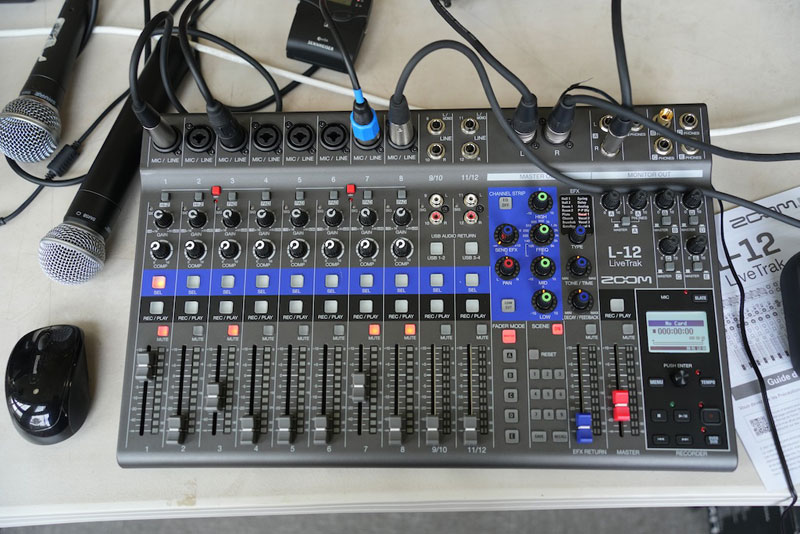
Both these mics are fed into a mixing board (shown above), and the output from that board drives a pair of powered pa speakers which are on stands behind the presenter facing the audience. We don’t turn these up very loud. They are chiefly intended as “sound reinforcement” as an aid to audience members who might be hard of hearing. The mic closest to the mixer in the above photo is the wireless handheld mic. The other mic shown here is a wired Shure SM58 cardiod mic to be used to read out loud to everyone, questions that online participants put in the Zoom chat. The picture below shows the placement of the speakers. From a feedback prevention perspective having the presenter in front of the speakers like this is not ideal, but we get away with it by using the headset cardioid mic.
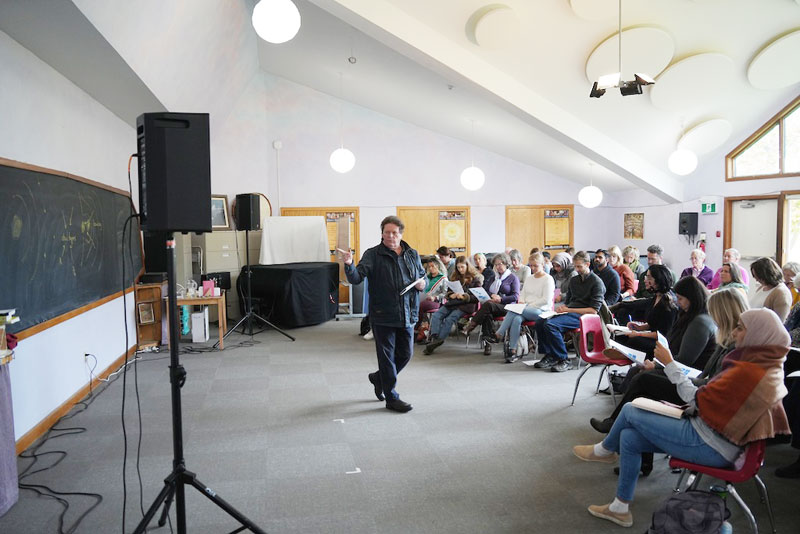
In the picture below we see the control panel for one of the speakers. Speaker volume is set at about 1/3 of maximum, but ultimately the volume is controlled by adjusting the output level from the mixer. Mode here is set to “monitor”. Subwoofer mode is off, the mixer on the back of the speaker is disabled.
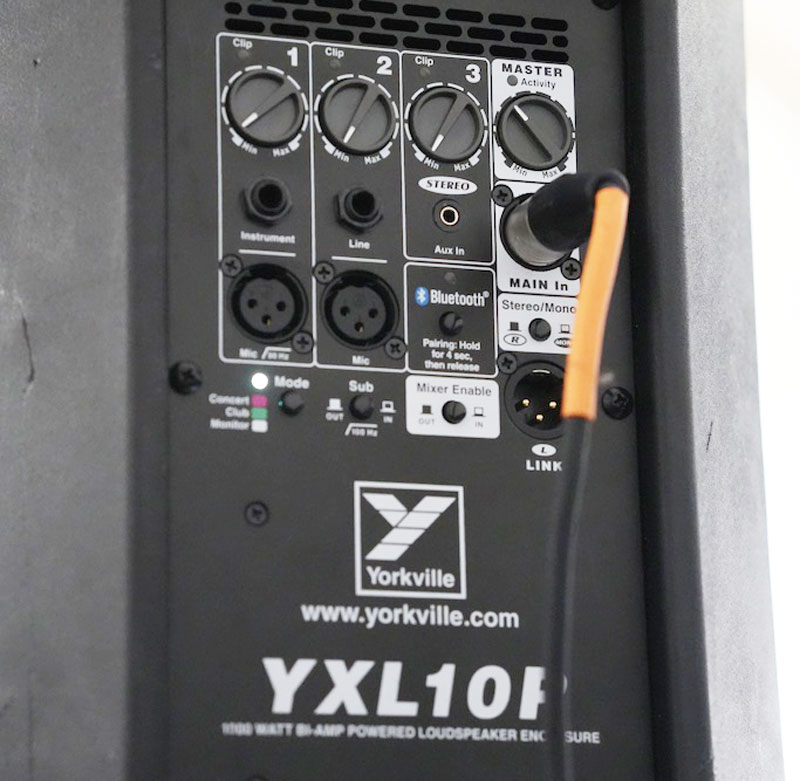
We use one of the monitor feeds from the mixing board to provide audio input to the camera. Here we are using a high definition camcorder with XLR audio inputs. We use this camera to record the video for subsequent use as that gives us a higher resolution result than what we get recording on Zoom. The camera is mounted on a tripod with a fluid head for video use which allows for smooth panning etc.
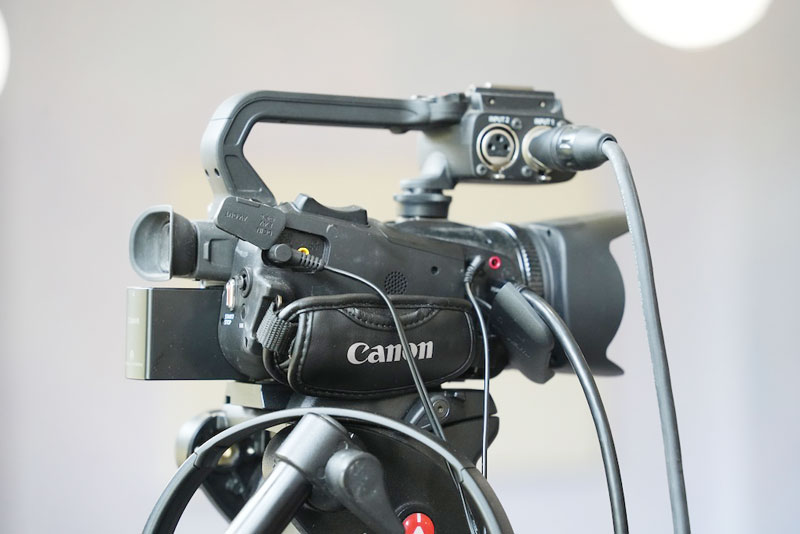
The combined video and audio output from the camera is fed out over HDMI to an interface box which converts the HDMI signal to appear to the computer as a webcam. The box we use would also allow us to switch between four different cameras if we wanted to. This particular box is called “Blackmagic Atem Mini Pro ISO”. Some more recent video and “mirrorless” cameras can be configured to interface directly as a webcam when plugged into a computer. And for those you wouldn’t need to use this box.
The red-illuminated ON button above the 1 button on the Atem Mini selects the audio feed from camera 1 to be sent to the output.
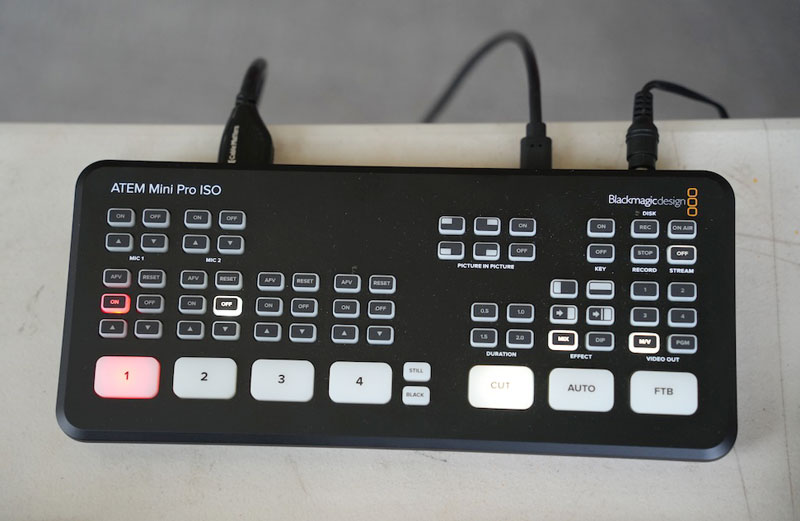
The Atem Mini Pro connects to the computer via a USB cable. Then on the computer, in the Zoom program, we select the Blackmagic Atem Mini Pro as the video source and also as the audio source. User view of the camera below, with all its connections. The camera and the tech table are located at the back of the room.
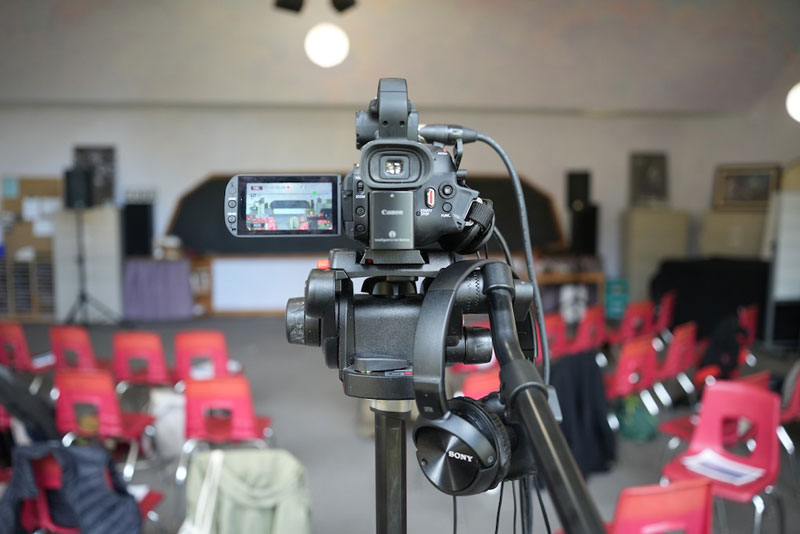
Here’s the computer and all the bits and pieces on the tech table.
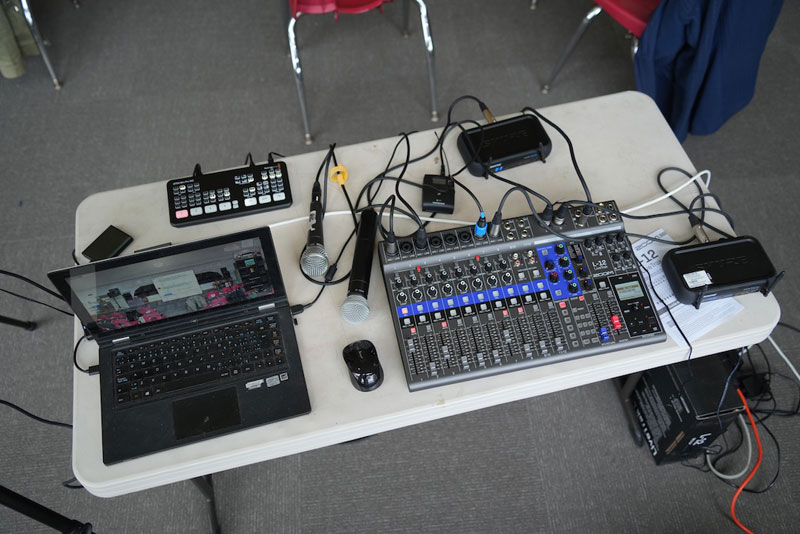
The initial glitches in Martyn’s presentation seemed to be caused by a wireless system which cut out whenever he turned to face the blackboard. Fortunately we had a backup system which we swapped it out for and which solved the problem. That new system was a Sennheiser G4 wireless kit, fitted with a Sennheiser ME-3 headset mic.

Recent Comments